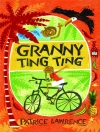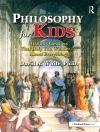‘It is a thorough and focused work on American corrections providing a solid opportunity for students to learn not only how the correctional system works but also to understand its ever increasing complexities.’
—Dorie Astle, Southwestern Oklahoma State University
American Corrections, Second Edition offers students a contemporary, issues-oriented introduction that covers every aspect of corrections, prompting students to think critically about complex issues that are affecting the current U.S. correctional system. Incorporating the most recent theory, research, and data available, the Second Edition encourages students to explore the most interesting and progressive developments in correctional policy and practice. Authors Barry A. Krisberg, Susan Marchionna, and Christopher J. Hartney draw from years of professional experience to give students a practical knowledge of corrections, as well as provide a framework for thoughtful analysis into what is plaguing the American correctional system and a realistic exploration of the solutions that could make a difference.
- SAGE Premium Video
Included in the interactive e Book! Corrections News Clips bring extra coverage of current events into the book, connecting brief 2 to 4 minute news clips to core chapter content.
- Interactive e Book
Includes access to SAGE Premium Video and other multimedia tools.
- SAGE coursepacks
FREE! Easily import our quality instructor and student resource content into your school’s learning management system (LMS) and save time.
- SAGE edge
FREE online resources for students that make learning easier.
قائمة المحتويات
Preface
Acknowledgments
Part I: History and Sentencing
Chapter 1: The Corrections System
Learning Objectives
A Legacy of Crisis and Turmoil
Corrections as a System
Corrections and Society
A Critical View of the System
A Keen Eye Toward the Future
Summary
Discussion Questions
Key Terms
Notes
Digital Resources
Chapter 2: A Historical Perspective on Punishment and Social Structure
Learning Objectives
Discerning Historical Constructs
Penance and Fines
Social Change in the Later Middle Ages
The Discovery of Imprisonment
Galley Slavery, Transportation, and the Emergence of Imprisonment
The Industrial Revolution and Corrections
Zebulon Brockway and the Rise of the Adult Reformatory
Corrections and the Progressive Era (1880–1920)
After the Progressive Era (1920–1960)
The Era of Civil Rights and Community Corrections (1960–1970)
The Prisons Explode (1970–1980)
The Demise of Rehabilitation and the Get-Tough Era (1970–Present)
The Return of Enlightened Corrections Policy
Summary
Discussion Questions
Key Terms
Notes
Digital Resources
Chapter 3: The Purpose of Punishment and Sentencing Trends
Learning Objectives
How Sentencing Works
The Presentence Report
Sentencing Theories
Contemporary Movements in Sentencing Laws and Policies
Summary
Discussion Questions
Key Terms
Notes
Digital Resources
Part II: Correctional Practice
Chapter 4: Jails
Learning Objectives
The Functions of Jails
Who Is in Jail?
Facts About Jails
Jail Administration
Jail Procedures
In-Custody Programs
Alternatives to Incarceration
Summary
Discussion Questions
Key Terms
Notes
Digital Resources
Chapter 5: Probation and Alternatives to Incarceration
Learning Objectives
What Is Probation?
Who Is on Probation?
A Brief History of Probation
Two Key Perspectives on Probation
Probation Administration
The Role of Probation Officers
Sentencing and Investigation
Supervision
Violation, Revocation, and Termination
Does Probation Work? Probation Research
Alternatives to Incarceration
Evaluating Alternatives to Incarceration
Cost Savings
Summary
Discussion Questions
Key Terms
Notes
Digital Resources
Chapter 6: Prisons
Learning Objectives
The Means to an End
Design of Prisons
What the Numbers Say
Prison Costs
The Federal System
State Prisons
Military Prisons and the War on Terror
Security Levels
The Supermax
Programs and Services
The Prison Environment
Discipline
Summary
Discussion Questions
Key Terms
Notes
Digital Resources
Chapter 7: Coming Home: Reentry and Parole
Learning Objectives
Parole as a Form of Community Corrections
The Early History of Parole
Parole Basics
Parole Authorities
The Challenges of Reentry
Reentry Data
Perspectives on the Current Purpose and Practice of Parole
What Works in Parole
Evidence-Based Practice and Parole
Summary
Discussion Questions
Key Terms
Notes
Digital Resources
Chapter 8: Juvenile Corrections
Learning Objectives
A Brief History
The Past 30 Years: More Cycles of Scandal and Reform
The Structure of the Juvenile Justice System
Characteristics of Juveniles in Custody
Overrepresentation of Youth of Color
Young Women and Juvenile Corrections
Recidivism Rates and Juvenile Corrections
Juvenile Corrections Fads
Summary
Discussion Questions
Key Terms
Notes
Digital Resources
Chapter 9: The Corrections Workforce
Learning Objectives
Corrections Work
Service Providers and Treatment in Custody
Why Corrections Work?
Characteristics of the Corrections Workforce
Correctional Staffing
Education and Training
The Correctional Hierarchy
Sustaining a Workforce
Job Stress
Progressive Developments in Leadership
Summary
Discussion Questions
Key Terms
Notes
Digital Resources
Part III: Critical Issues and Policy Questions
Chapter 10: Holding Corrections Accountable
Learning Objectives
State Regulatory Bodies
Professional Standards
Litigating in the Courts to Stop Abusive Practices
Legislating Reforms
Summary
Discussion Questions
Key Terms
Notes
Digital Resources
Chapter 11: Corrections and the Color Line
Learning Objectives
Measuring the Extent of the Problem
Race and Ethnicity Behind the Walls
African American Disproportion in the Criminal Justice System
Asian Americans and Pacific Islanders and the Corrections System
Native Americans and the Corrections System
Latinos and the Corrections System
Immigration and Incarceration
Understanding the Causes of Racial Disparity in Corrections
Racial Profiling
Summary
Discussion Questions
Key Terms
Notes
Digital Resources
Chapter 12: Women in the Corrections System
Learning Objectives
The “Pink Syndrome”
The Rising Tide of Incarcerated Women—What the Numbers Say
Young Women and the System
Women’s Pathways Into Crime
A Complex Mix of Risk Factors
Coping With Incarceration
Programs and Services
Operational Issues in Custody
Conditions of Confinement
Research on Women and the Justice System
Moving Forward With Research on Women
Prospects for Gender-Responsive Programming
Summary
Discussion Questions
Key Terms
Notes
Digital Resources
Chapter 13: Challenging and Vulnerable Populations
Learning Objectives
Prisons and Jails as Community Health Providers
A Wide Range of Medical Problems
Health Care Services
Mental Illness in Prisons and Jails
The Increasing Elderly Prison Population
Lesbian, Gay, Bisexual, Transgender, and Questioning Inmates
Summary
Discussion Questions
Key Terms
Notes
Digital Resources
Chapter 14: Death Row and the Death Penalty
Learning Objectives
The Controversial Moral Imperative
The State of Capital Punishment
Characteristics of Death Row Inmates
Legal Challenges to the Death Penalty
Juveniles and the Death Penalty
The Death Sentence and Mental Competence
Innocence and Those Awaiting Executions
Costs of Capital Punishment
The Problem of Lethal Injection
Summary
Discussion Questions
Key Terms
Notes
Digital Resources
Part IV: The Effectiveness and Future of American Corrections
Chapter 15: The Privatization of Corrections
Learning Objectives
History and Functioning of Private Prisons
Major Private Prison Companies
How Private Prisons Function
Other Forms of Corrections Privatization
Private Prison Performance
Impact of Privatization on Local Economies
Privatization, Innovation, and Reform
The Profit Motive and Conflict of Interest
Contracting, Oversight, and Monitoring
Are Private Prisons Necessary?
Further Research
Summary
Discussion Questions
Key Terms
Notes
Digital Resources
Chapter 16: The Politics and Future of Mass Incarceration
Learning Objectives
Mass Incarceration and Electoral Politics
In Whose Interest?
An Opening to Change
What the Public Actually Thinks About Corrections Policy
Confronting the Politics of Mass Incarceration
Is Money the Currency of Reform?
Recruiting New Allies to Corrections Reform
Summary: The Way Forward
Discussion Questions
Key Terms
Notes
Digital Resources
Glossary
References
Index
About the Authors
عن المؤلف
Christopher Hartney is a senior researcher at the National Council on Crime and Delinquency in Oakland, California. He has worked with the organization since 2001, and has two decades of professional experience in research and statistics. Chris’ work at NCCD, funded by various federal, state, and local government agencies and philanthropic foundations, has included the national evaluation of the Juvenile Detention Alternatives Initiative; bed space needs forecasts for youth tried as adults in Baltimore, Maryland and for juvenile justice-involved youth following system reforms in Arkansas; the development of a new approach to prison for young adults emphasizing intensive strengths-based rehabilitative and educational services in small secure facilities; a review of the causes and impacts of the decarceration of youth from California’s youth prison system; the national evaluation of Parents Anonymous; the potential cost savings of alternatives to incarceration for non-serious adult offenders; a Structured Decision Making system for the District of Columbia; the interplay of media coverage, public sentiment, data trends, and policymaking with regard to youth violence in major U.S. cities; and a survey of health care access for system-involved youth in 58 California counties. Chris has authored several NCCD publications documenting disproportionate representation of people of color in the justice system and other issues in justice and corrections, including spotlights on women, Native American youth, youth under 18 in the adult system, and international corrections. He is co-author of several peer-reviewed articles and has presented study findings before a variety of professional, governmental, and community groups. Before joining NCCD, his research work included educational assessment and health impacts in communities exposed to industrial accidents. Chris has a B.A. from the University of California at Berkeley and has completed all master’s level coursework in experimental psychology at San Francisco State University.












